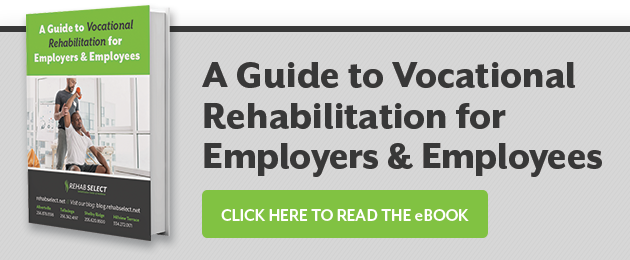 When it comes to workers' comp injuries, getting employees back to work as quickly as possible benefits everyone, from the injured employees themselves to employers, insurance carriers and other stakeholders in the injury management process.
When it comes to workers' comp injuries, getting employees back to work as quickly as possible benefits everyone, from the injured employees themselves to employers, insurance carriers and other stakeholders in the injury management process.
Here, we'll outline the essential role workers' comp rehabilitation can play in safely and effectively speeding the transition from debilitating injury back to workforce productivity.
The Many Advantages of Minimizing Missed Work Time
Injured workers benefit from a swift return to employment in many ways. These can include faster recoveries, greater job and financial security, less decline in fitness and job skills, and lower risk of depression and other secondary injury complications. Additionally, returning to work quickly can also reduce odds of permanent disability and the lifestyle/income changes it brings, as studies show that the longer employees are out of the workplace, the less likely they are to reenter the workforce at all.
By getting injured employees back to work quickly, employers can benefit from better retention of trained and experienced employees and avoid or reduce hiring and training expenses for replacements. Workers' comp costs can be reduced in the form of lower medical costs and the ability to pay wages for real work – even if it is light duty – rather than having insurance carriers providing wage replacement benefits. Clearly, these factors are beneficial to employers, their insurance carriers and all other stakeholders involved with the management of workers' comp injuries.
How Workers' Comp Rehabilitation Can Get Employees Back to Work
In many cases, providing workers' comp rehabilitation services after injury on the job can be instrumental in promoting faster, more complete recoveries than might otherwise occur. Employees provided these services are treated by a physician-led team of rehabilitation specialists. Treatment begins with a thorough evaluation of the worker's condition, injuries and functional capacity as it relates to their ability to perform daily job duties.
Then, a personalized treatment plan is devised according to the needs and goals defined by that evaluation. Treatment is intensive and may, according to each worker's individual needs, include physical therapy, occupational therapy, speech therapy, wound care, pain management and rehabilitation nursing care, among other services. As treatment progresses, the effectiveness and efficiency of the treatment plan will be evaluated at regular intervals and adjusted as necessary to ensure optimal progress towards recovery and rehabilitation goals.
The overarching goal of treatment in a solid workers' comp rehabilitation program is well-aligned with the ultimate goals of employees, employers, insurance carriers, case managers and other stakeholders: to get injured employees back in shape and back to productivity as quickly, safely and cost-efficiently as possible. In a great many serious injury cases, the specialized services these programs provide make success in reaching that goal much more likely than is possible with standard medical care alone.





